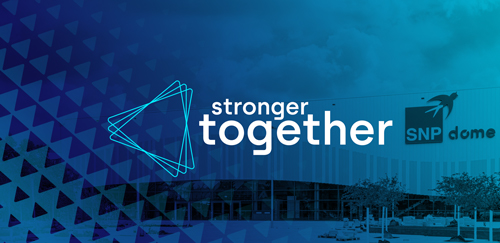Digital transformation in the global automotive industry: An incremental journey for both products and the back office
How to manage digital transformation in the automotive industry? Learn more about how to set long-term goals in our latest blog post.
Share
Twenty-six digital topics that are transforming the automotive industry
A recent paper on digital transformation in the automotive industry identifies 26 digital technology topics that fall into three primary clusters: 1) Driving assistance systems, 2) Routing, positioning, and environmental monitoring, and 3) Data, connectivity, and in-car technology. None of these 26 are particularly radical in their transformative nature specific to automotive (with the possible exception of optical track detection). In fact, most could be characterized as either technological improvements (changing what was once physical into digital, like in the case of a fuel gauge) or technological spanners (i.e., using or combining technologies from other industries to create new applications). Collision prevention is one of only a handful of truly disruptive technologies, however the integration of multiple technologies is required to make this truly effective, and not simply help a driver avoid one crash only to cause – or be involved in – another.
Digital transformation doesn’t happen overnight
Incremental innovation is critical for product, service, and process evolution, but it is often seen as less interesting than a radical new technology like AI. The global automotive industry continues to apply incremental innovation techniques to their vehicles and how those vehicles are designed, sourced, manufactured, and serviced. In 2022, the industry invested nearly USD 100 billion in this area and is projected to spend nearly USD 240 billion by the end of 2030.
Those who want change to take place yesterday may be frustrated by what could be perceived as a sluggish pace toward digitization, but the sort of change required to take so-called Industry 4.0 from a PowerPoint slide to operational reality isn’t going to happen overnight. The pitfalls of seeking rapid, radical change can be costly. Those of us who can (still) remember our business management class in college know that trying to grow too fast can result in overvalued sales, ineffective business operations, increased attrition, poor customer service, and poor financial management. Those of us who can also (still) remember the early days of SAP R/3 and ECC carry the scars of far too many failed implementation projects because of the rush to implement too much change at one time and cutting project budgets in the absolute wrong areas, such as organizational change management.

Digital transformation is a marathon, not a sprint
Many global companies continue to receive bad advice regarding back-office digital transformation. SAP S/4HANA and the cloud are too often touted as reasons for taking a Greenfield approach to replacing legacy SAP stems – flushing years (for some even decades) of blood, sweat, tears, and hundreds of millions of dollars down the drain. Those in love with sequential waterfall projects advise their clients to go step by step, laying out a multi-year roadmap with 10+ projects that will require the same number of procurement processes, kickoffs, staffing and backfilling challenges, operational downtimes, and excuses to stop or put things on hold. Nobody has the patience or tolerance for 3-to-5-year SAP projects anymore, nor do they have the tolerance for projects with zero ROI or endless operational disruption. Yes, incremental innovation is just as applicable to back-office transformation as it is to building the next version of modern cars, trucks, and motorcycles. The pace of incremental innovation should be set by a combination of realistic cultural change boundaries and the availability of safe transformation accelerators in the market. It is easy to confuse an incremental approach with hesitancy.
Repair, rethink, and re-energize
2023 is certainly not the year to listen to or follow through on bad advice if you are operating in the global automotive industry. Inflation, rising interest rates, and seemingly never-ending supply chain problems have been eating away at your profit margins and revenue since the pandemic and are showing no signs of disappearing. Companies like PwC offer the right advice for major companies in the automotive ecosystem: repair, rethink, and re-energize. Combined with long-standing guidance from Harvard Business Review and McKinsey that market downturns can offer the best opportunities to make judicious investments, now could be the best opportunity to initiate thoughtful, realistic, and beneficial digital transformation projects.
A proven track record for managing changes in SAP systems for the automotive industry
The use of SAP ERP is prevalent in the global automotive industry and used by both long-established OEMs like BMW and new market players like Rivian. SNP knows that SAP is widely used because we have completed over 1,350 projects for customers around the world. Their challenges are in many ways no different from those of other heavy manufacturers running SAP, yet the nuances are important to recognize and plan for. Here are few examples of what we have been asked to do:
- For Volkswagen, SNP consolidated and harmonized data from two legacy SAP source systems and migrated them to S/4HANA.
- For XCMG, SNP migrated 22 TB of data from ECC to S/4HANA with less than two days of technical downtime, leaving over 18 TB of historical data behind.
- For Honda, SNP merged two company codes and their respective organizational hierarchies in only eight days.
Five golden rules for a successful digital transformation project
The advice SNP offers is simple and based on decades of history and applying what we have learned:
- The place to invest time and thought in digital transformation is up-front when conducting short and long-term organizational and operational planning.
- Adopt a pace of change that is both suitable for your corporate culture and takes into consideration market realities.
- Understand the technologies available in the market today that can accelerate transformation without disrupting business operations – or stressing out your employees.
- When thinking about long-term transformation efforts and digital capabilities such as the digital thread, consider the current quality, location, and accessibility of your data first.
- Know what your options are with respect to modernizing or moving your legacy SAP systems.
SNP has a proven track record of successful SAP transformation projects, including mergers and acquisitions, S/4HANA implementations, complex system transformations and integrations. If you are looking for an experienced partner for your next SAP project, reach out to our experts.

